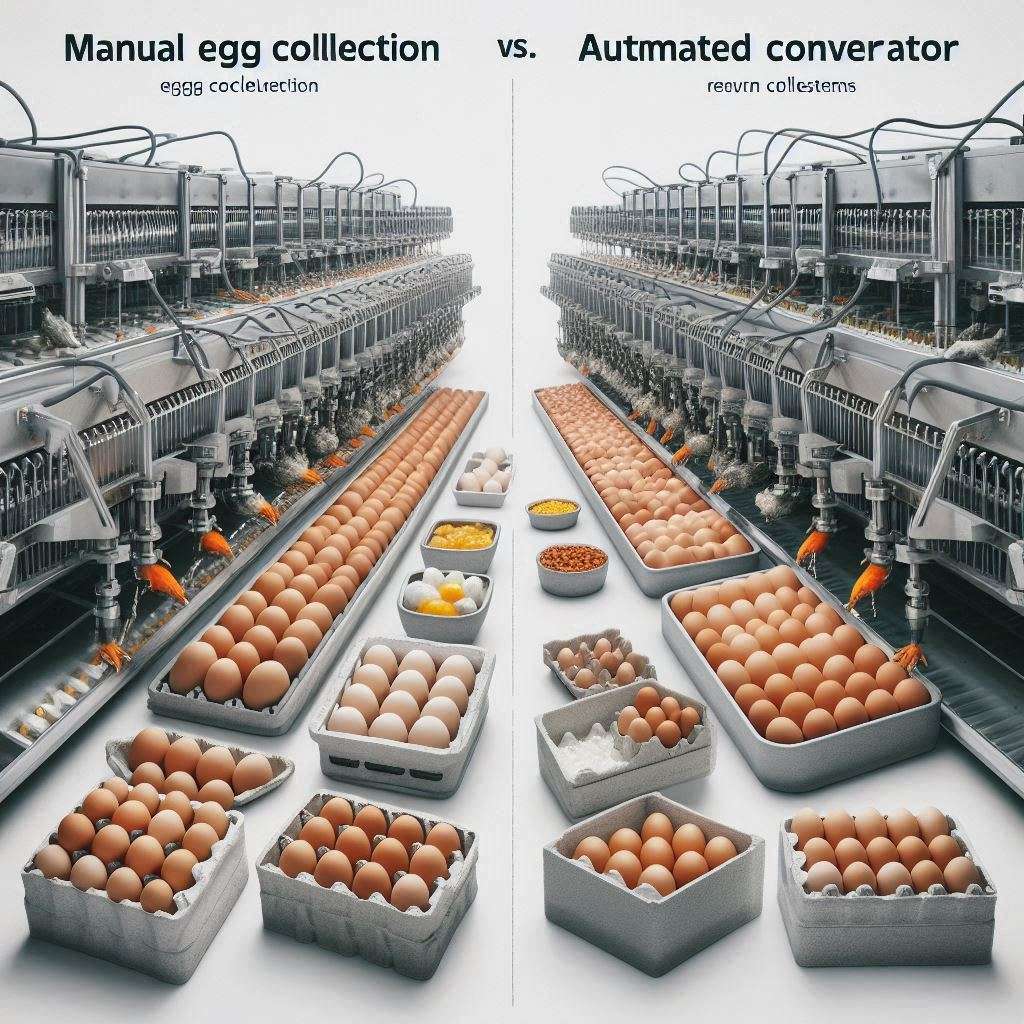

The poultry industry has to deal with sensitive material like eggs all the time, and each unit is very crucial. A broken egg has a cost and can multiply with all other eggs that fail to meet expectations. Therefore, careful handling is the utmost requirement in this industry because the rest of the procedure becomes less risky after the packaging. Before the packaging, it was about how efficient laborers or machines were in egg sorting and collection processes. By comparing manual and automatic operations, we can find out which is better for your size of poultry business.
Manual Egg Collection
Before all these automatic operations, manual operations ruled the industry. Even in this modern age, many operations still rely on manual methods. Egg collection is one of those activities that can be performed manually for a fine output. If we compare it with the automatic version, here are some features.
Requires Lower Investment
You don’t need to invest in heavy machinery to start small-scale poultry businesses. You will not require a significant investment because you can do the job manually. You will need just a few laborers to collect eggs from nest boxes.
Suitable for Small Poultry Farms
Since it is a small-scale business, you will not need a single sorting or collecting machine. Manual operations will be enough where you only have to train your workers. If you want to do it alone, it might be impossible. You will need helpers with fine skills to collect and sort eggs safely.
Labor Work with More Cost and Time
Of course, manual egg collection will have some challenges. The laborers you hire will need wages, which will increase the cost of operations and also take up time. Since they are humans, they will need breaks in their shifts.
Slow Operation with High Risk of Egg Damage
Also, egg handling requires lots of care, so that workers will take extra time. They cannot pick up eggs quickly, and many in each palm. Even if they handle eggs carefully, they can make mistakes and errors in the work. They could drop or press the eggs from the nest box to the collection point. It will increase the risk of damage, which means laborers will gently carry eggs with more time.
More Chance of Inconsistent Sorting
Consistency in the sorting process will depend on the expertise of the laborer. Different workers have different experiences. The most experienced one will do better sorting than the inexperienced one. It will cause inconsistency in the sorting process of eggs.
Automated Conveyor Systems
If laborers are replaced with machines, there will be advantages and disadvantages. However, the benefits are more tremendous because of industry requirements. Since every industrial operation must be automatic in the future, this shows the high potential of automatic egg collection machines in the industry.
Requires High Investment
Without a significant investment, imagining massive machinery in your business is impossible. You must increase your investment to produce some machines to upgrade your poultry business. These machines will perform core operations like sorting, collecting, and packaging. To meet the considerable demands of the masses, you must have fast-paced machines for egg handling.
Less Labor Cost and Operating Time
Large-scale poultry operations need more machines than laborers. The reason is the labor cost, which might be higher than the machine’s. Moreover, the operating time will be much higher through machines. A machine can do the job way faster and at a consistent rate than lots of laborers. It will show a massive impact on operating costs at the end of the day.
High Efficiency and Less Risk of Egg Damage
A machine makes fewer mistakes than a human. No matter how much you train a worker, they might make more mistakes than machines. Choosing automated conveyor systems is more efficient when it comes to large-scale operations. They are more efficient in reducing the risk of breaking eggs. The way a machine moves eggs in large volumes, it is not possible for humans to do that. The automatic process makes a huge difference by keeping the egg damage rate low. Therefore, industries prefer to choose this method for the highest output level.
Full Reliance on Technology
Relying entirely on automatic egg-handling machines can be challenging, as sudden downtime is risky. Downtime can halt any operation due to power failure, machine fault, or other reasons. This complete reliance can disrupt supply if the entire production line faces the same problem simultaneously. Also, industrial machines must be maintained regularly, which can lead to downtime in the egg processing system.
High Consistency in Sorting with a Track Record
If you look at the advantages of complete reliance on automatic egg collection and sorting, there are more benefits than advantages. The consistency of sorting and packaging will be very high. Some eggs are large, and some are small, which causes problems for manual sorters. However, machines are good at sorting. Their high consistency in efficient sorting makes them the right choice for industries. Moreover, industries can track how many eggs were sorted in the process. They can compare the records to analyze revenues and overall costs better.
Conclusion
Both manual and automatic egg-handling modes have their worth in their fields. However, automatic sorting is the best option for large-scale operations. That will be an efficient, cost-effective, and consistent method to increase the poultry industry's revenues.